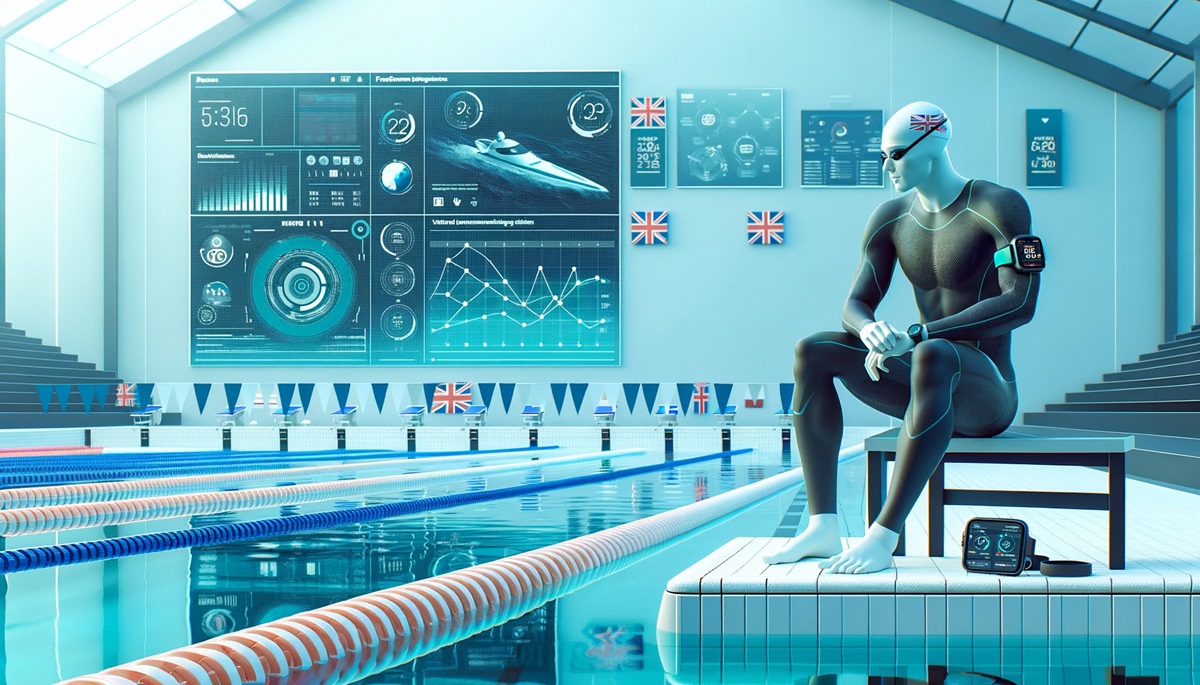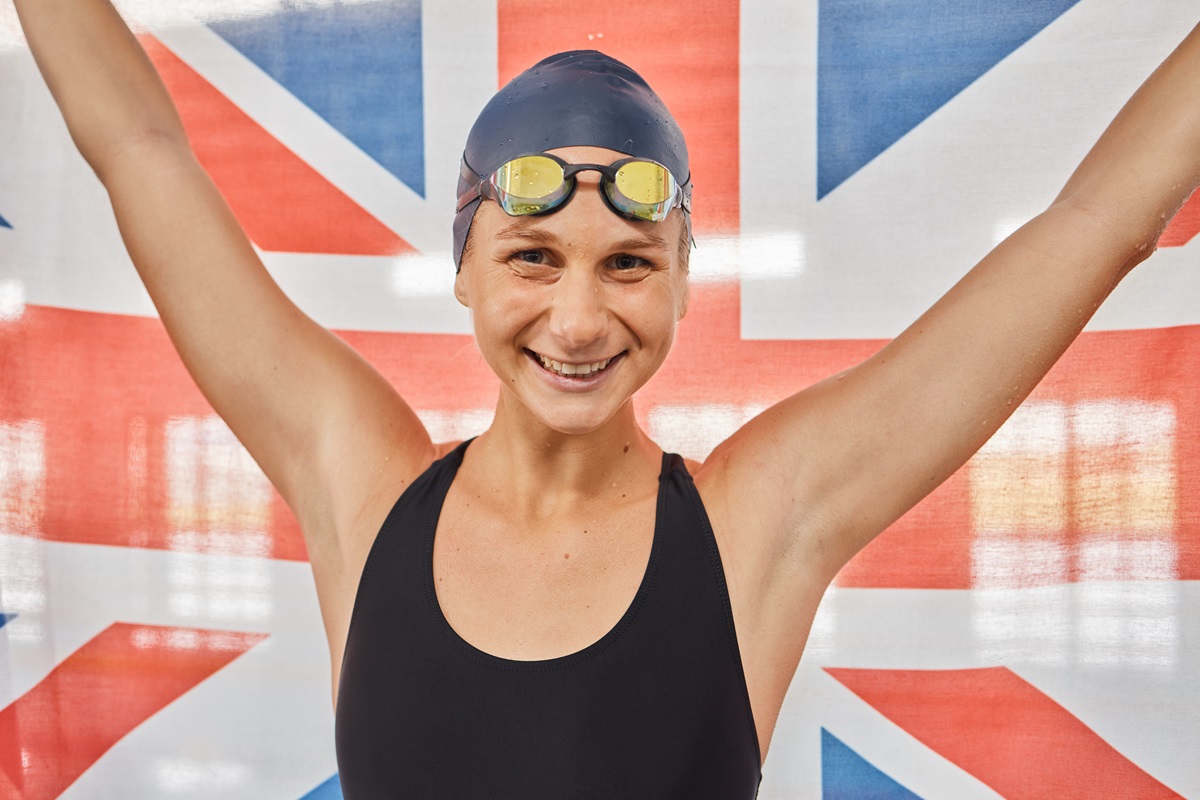British swimming, a sport steeped in history and rich in achievements, offers an enthralling narrative that has captivated everyone from enthusiastic amateurs to professional athletes. This article delves into the multifaceted world of British swimming, exploring its historical roots, current trends, notable figures, state-of-the-art training facilities and a myriad of swimming competitions that span from the local to the international stage.
The historical currents of British swimming

The origins and early developments
The tale of British swimming is one of evolution and refinement. The early days saw swimmers take to the rivers and lakes, engaging in what was then a recreational activity, more for leisure than competition. This informal style of swimming gradually began to take on a more organized form as local communities and regions started hosting swimming events, marking the early seeds of competition. It was during these formative years that the foundations of British swimming as a structured sport were laid.
By the mid-19th century, swimming in Britain began to see a significant transformation. The formation of the Amateur Swimming Association in 1869 was a pivotal moment in the history of British swimming. This organization brought a sense of order and professionalism to the sport, establishing rules, regulations and structured competitions. It was the dawn of a new era where swimming transitioned from a casual pastime to a competitive endeavor, with clubs emerging across the nation to foster talent and promote the sport.
This period also saw the construction of the first public indoor swimming pools, a move that greatly expanded the accessibility and popularity of swimming. These pools not only provided a venue for training and competition but also became social hubs, further embedding the sport into the fabric of British society.
British swimming on the world stage
As the 20th century dawned, British swimming was poised to make its mark on the global stage. The 1908 London Olympics were a watershed moment for the sport in Britain. For the first time, British swimmers competed on an international platform, showcasing their prowess and earning recognition for their skill and dedication. This event not only celebrated British swimming but also ignited a passion for the sport among the British public.
In the following decades, British swimming continued to grow in stature and success. The nation consistently produced a stream of talented swimmers who excelled at various international competitions. British swimmers not only competed but often dominated in events like the Olympics, World Championships and the Commonwealth Games. Each success further entrenched the significance of British swimming on the world sporting landscape.
Key figures in British swimming began to emerge, setting records and winning medals, their names becoming synonymous with the sport’s excellence. These athletes were not just champions in the pool; they were ambassadors of British swimming, inspiring a new generation of swimmers and elevating the profile of the sport both at home and abroad.
Their achievements on the global stage brought a renewed sense of pride and enthusiasm for swimming in Britain. It led to increased investment in the sport, better training facilities and more robust development programs, all of which have played a critical role in sustaining and enhancing the legacy of British swimming.
As British swimming moves forward, it continues to build on this rich history, drawing from its early beginnings and significant achievements to shape its future trajectory. The story of British swimming is one of continuous growth and success, a testament to the nation’s enduring love and commitment to the sport.
Current trends in British swimming

Technological advancements and modern training methods
The landscape of British swimming today is vastly different from its past, largely due to the advent of advanced technologies and progressive training methodologies. In the quest for excellence, British swimming has embraced a range of technological innovations. From sophisticated training equipment, such as high-tech swimwear and performance monitoring systems, to the use of data analytics and biomechanics in training, technology is at the forefront of British swimming’s evolution.
One of the most significant technological advancements in British swimming has been the integration of video analysis and virtual reality. These tools allow coaches and athletes to analyse swimming techniques in minute detail, offering insights that were previously unattainable. Moreover, the use of wearable technology to monitor physiological parameters such as heart rate and muscle activity has revolutionized training regimes, allowing for personalized and highly efficient training plans.
British swimming has also seen a shift towards a more scientific approach in training. Coaches and sports scientists are working hand in hand to understand the nuances of human performance in water. This collaborative approach has led to innovative training techniques, focusing not just on physical conditioning but also on mental strength, nutrition and recovery, ensuring that British swimmers are well-rounded athletes.
Inclusivity and Diversity in Swimming
Another pivotal trend in British swimming is the increasing focus on inclusivity and diversity. Recognising the importance of broadening the base of the sport, various initiatives have been put in place to ensure that swimming is accessible and welcoming to everyone, regardless of their background.
Efforts to promote inclusivity in British swimming range from grassroots programs aimed at introducing swimming to underrepresented communities, to high-profile campaigns that challenge stereotypes and promote diversity in the sport. These initiatives are vital in reflecting the multicultural and diverse nature of modern British society within the realm of swimming.
British swimming has also seen a rise in adaptive swimming programs, catering to swimmers with disabilities. These programs not only offer competitive opportunities but also emphasize the therapeutic and social benefits of swimming. The success of British swimmers in Paralympic swimming is a testament to the inclusivity and support offered within the sport.
Furthermore, British swimming is actively working to address gender disparities and promote equal opportunities for female swimmers. This includes not only athlete participation but also leadership roles within the sport. The aim is to create an environment where talent is nurtured and success is celebrated, regardless of gender or background.
In conclusion, the current trends in British swimming – the integration of advanced technology and a commitment to inclusivity and diversity – are shaping a future where the sport is more dynamic, competitive and representative of the society it serves. British swimming is not only about achieving excellence in the pool but also about fostering a culture of innovation, inclusivity and diversity.
Notable Figures in British Swimming

Legends of the Pool
The annals of British swimming are adorned with the names of numerous legendary swimmers who have left indelible marks on the sport. These figures, spanning from the early 20th century to the present day, have not only set records and won medals but have also become synonymous with the spirit and resilience of British swimming.
One can’t talk about the legends of British swimming without mentioning pioneers like David Wilkie and Duncan Goodhew, who dominated the pool in the 1970s and 1980s. Their groundbreaking achievements at the Olympics and World Championships blazed a trail for British swimmers, setting new standards and inspiring a nation. Similarly, swimmers like Rebecca Adlington and Adam Peaty have etched their names in history, not just for their record-breaking performances but for their ability to captivate and inspire audiences, both within and beyond the British swimming community.
These legends have contributed significantly to the sport’s evolution, integrating professional training methods and bringing a competitive edge that has defined modern British swimming. Their stories of perseverance, dedication and triumph resonate with aspiring swimmers, serving as beacons of inspiration and exemplars of excellence in British swimming.
Rising Stars and Current Champions
The current era of British swimming is marked by an exciting cohort of champions and rising stars who are carrying the legacy forward. These athletes, through their remarkable achievements and dedication, are shaping the contemporary narrative of British swimming.
Current champions like Freya Anderson and Luke Greenbank are not only breaking records but are also redefining what it means to be a swimmer in today’s competitive environment. Their journeys, marked by relentless training, strategic innovation and mental fortitude, encapsulate the essence of modern British swimming.
Moreover, the rising stars in British swimming, such as the young and talented Alice Dearing, are making waves with their remarkable performances in national and international arenas. These swimmers are not just future champions but are also ambassadors of the sport, promoting swimming’s values of hard work, perseverance and sportsmanship.
This section of the article would delve into the personal stories of these swimmers, exploring their beginnings, challenges, triumphs and the impact they have had on British swimming. It would highlight how their individual journeys are intertwined with the broader narrative of British swimming, reflecting both the sport’s rich heritage and its dynamic future.
In summary, the legends and current champions of British swimming form a mosaic of talent, dedication and achievement. Their contributions go beyond personal accolades; they symbolize the strength, diversity and enduring spirit of British swimming, inspiring new generations to dive into the sport and strive for excellence.
Training Facilities and Development Programs in British Swimming

World-Class Facilities
The caliber of training facilities is a critical component in the success of British swimming. In the UK, there are numerous world-class facilities that have become the breeding grounds for developing elite swimmers. These centres are equipped with state-of-the-art amenities, including Olympic-sized pools, advanced training equipment and comprehensive support services encompassing physiotherapy, nutrition and sports psychology.
Prominent among these is the London Aquatics Centre, a legacy of the London 2012 Olympics. This facility not only serves as a monument to Britain’s sporting achievements but also as a hub for developing future champions. Its world-class pools and training facilities have been instrumental in honing the skills of British swimmers, contributing significantly to the nation’s achievements in international competitions.
Beyond the Aquatics Centre, there are high-performance centers spread across the country, like the National Centre for Swimming at Loughborough University. These institutions are at the forefront of swimming excellence, offering an optimal environment for athletes to train and develop. They provide a holistic approach to training, combining physical conditioning with technical skill development and mental preparedness.
These facilities are not just for elite athletes; they also serve as community hubs, promoting swimming at all levels and contributing to the overall health and well-being of the public. They play a crucial role in maintaining British swimming’s status as a top contender on the world stage.
Grassroots Initiatives and Talent Development
The foundation of British swimming’s success lies in its robust grassroots initiatives and talent development programs. Recognizing the importance of nurturing talent from a young age, British swimming has established a network of programs aimed at identifying and developing young swimmers.
One key aspect of these initiatives is the emphasis on accessibility and inclusivity. Programs are designed to reach out to communities across Britain, ensuring that talent can be discovered and nurtured regardless of socio-economic background. These initiatives offer young swimmers not only coaching and training but also mentorship and support, helping them to navigate the challenges of competitive swimming.
In addition to community-based programs, there are also talent identification and development schemes run by national and regional swimming bodies. These programs focus on spotting promising swimmers and providing them with the necessary resources and training to excel. They include regional camps, national development programs and targeted support for promising athletes, ensuring a steady pipeline of talent for British swimming.
Moreover, British swimming has invested in coaching development, recognizing that skilled coaches are fundamental to athlete development. Through coaching education and certification programs, British swimming ensures that its coaches are equipped with the latest knowledge and techniques, thus enhancing the overall quality of training and support available to up-and-coming swimmers.
In conclusion, the combination of world-class facilities and grassroots initiatives forms the backbone of British swimming’s development strategy. By investing in these areas, British swimming not only nurtures current talent but also secures its future, ensuring that the sport continues to thrive and evolve, reflecting the dynamism and diversity of British society.
The Competitive Arena of British Swimming

National Competitions
The national competitive landscape of British swimming is a diverse and vibrant scene, encompassing a wide range of competitions that cater to various skill levels and ages. From local club meets to high-profile national championships, these events form the backbone of competitive swimming in Britain.
At the local level, club meets play a crucial role in the development of swimmers. These events provide young and amateur swimmers with their first taste of competition, allowing them to experience the thrill of racing and the discipline of training for an event. Local meets are not just about competition; they are also community gatherings, fostering a sense of camaraderie and belonging among participants.
The county and regional championships are the next tier in the competitive structure of British swimming. These events are more competitive, bringing together the best swimmers from various clubs and regions. They serve as an important stepping stone for athletes looking to progress to higher levels of competition.
The pinnacle of national competition in British swimming is the national championships. Events like the British Swimming Championships and the British Summer Championships are where the nation’s top swimmers converge to compete at the highest level. These championships are not only a showcase of the elite talent in British swimming but also serve as qualification events for international competitions. The performances at these national events are a testament to the depth and quality of British swimming talent.
Britain on the International Stage
British swimming’s presence on the international stage is marked by a history of remarkable achievements and a reputation for producing world-class swimmers. British athletes compete in a range of international events, from the European Championships to the World Championships and the pinnacle of all, the Olympic Games.
The Olympics, in particular, are a major focus for British swimmers. Every four years, the nation’s best athletes come together to represent Britain on the world’s biggest sporting stage. British swimmers have a storied history at the Olympics, with numerous medals and record-breaking performances, showcasing the nation’s strength in the sport.
The World Championships are another key event where British swimmers compete against the world’s best. These championships are not just about winning medals but also about gaining valuable experience and testing themselves against top international competitors. British performances at these events are closely watched as indicators of the nation’s standing in global swimming.
In addition to these major events, British swimmers also participate in other international competitions like the Commonwealth Games and the European Championships. These events offer additional opportunities for British swimmers to gain international experience, hone their skills and bring glory to their nation.
The success of British swimmers on the international stage is a result of the rigorous training, world-class facilities and strong competitive framework within British swimming. It reflects the effectiveness of the development programs and the commitment of athletes, coaches and support staff in pursuing excellence in the sport.
In conclusion, the competitive arena of British swimming, from the grassroots level to the international stage, is a crucial component of the sports ecosystem. It provides opportunities for swimmers to develop, compete and excel, playing a vital role in sustaining and enhancing the rich tradition of British swimming.
Conclusion
In conclusion, British swimming, with its rich heritage, current dynamism and future potential, is a vibrant and integral part of the nation’s sporting landscape. It is a sport that continues to evolve, embracing new challenges and opportunities while staying true to its proud legacy. This article not only celebrates the achievements of British swimming but also invites readers to appreciate the depth and breadth of this fascinating sport.
